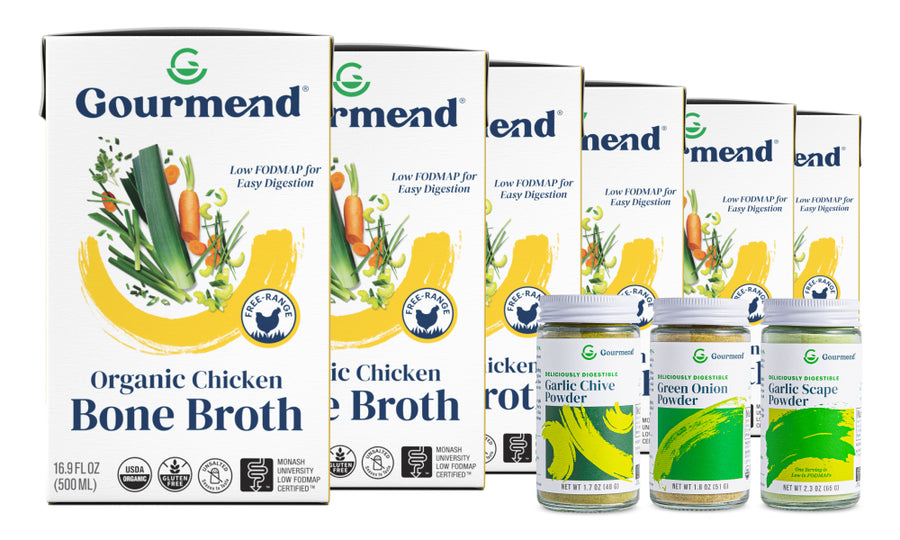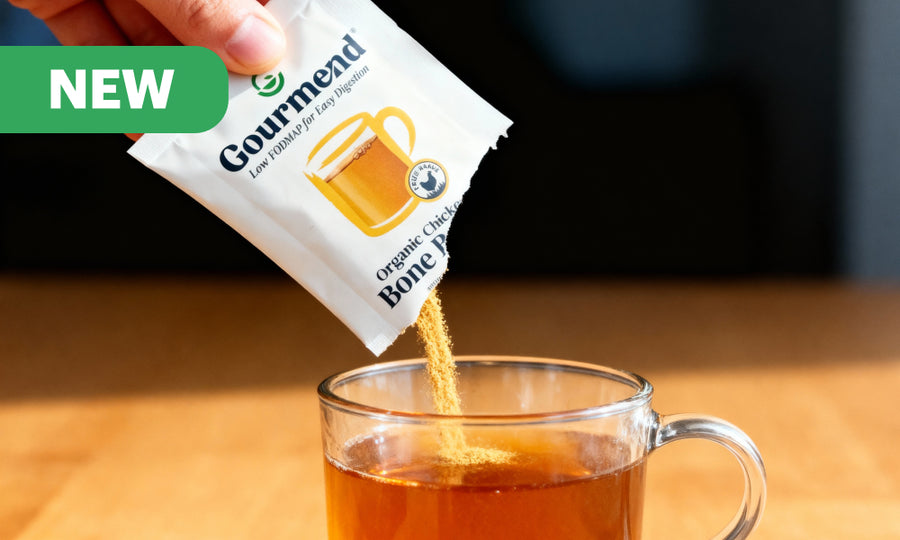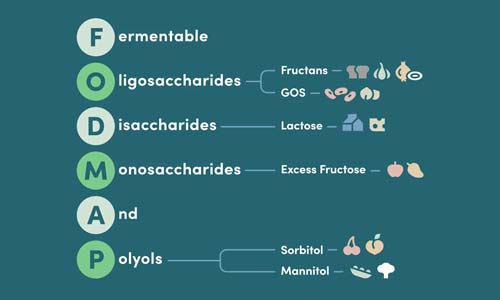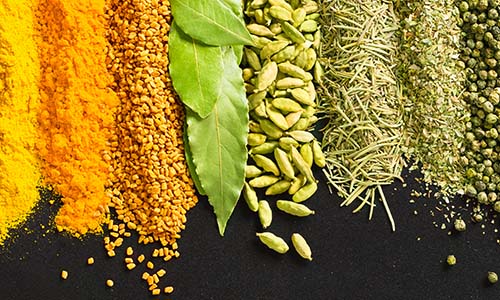Is Pea Protein Low FODMAP? The Complete Guide

Key Takeaways
- Pea protein isolate may be a gut-friendly alternative for those sensitive to whole peas.
- Whole peas often cause digestive issues for people with IBS due to their FODMAP content.
- Pea protein has the potential to enhance plant-based protein intake without causing bloating.
- Understanding the FODMAP content of pea protein can help manage digestive health better.
Table of Contents
- Quick Answer, Is Pea Protein Low FODMAP?
- Understanding Pea Protein, What It Is and Why Processing Matters
- Low FODMAP Diet Principles, Plain Talk for Food Lovers
- The Science, Why Pea Protein Isolate Can Be Low FODMAP
- Pea Protein vs. Whole Peas, Digestive Impact Compared
- Certified Low FODMAP Pea Protein Powders, Identifying What's Safe
- Reading Protein Powder Labels, Detecting Hidden FODMAP Risks
- How to Choose a Low FODMAP Pea Protein, Pro Tips for Every Pantry
- Pea Protein vs. Other Proteins, Low FODMAP Comparison
- How to Use Pea Protein on a Low FODMAP Diet, Recipes & Flavor Hacks
- Common Pitfalls & Troubleshooting, If Pea Protein Bothers Your Gut
- Best Low FODMAP Pea Protein Brands, Curated for Sensitive Digestion
Is Pea Protein Low FODMAP? The Complete (Delicious) Guide for Gut-Friendly Protein
If you've been wondering whether is pea protein low FODMAP, you're asking the right question. While whole peas trigger digestive distress for many with IBS, pea protein isolate tells a completely different story, one that could revolutionize your plant-based protein game without the bloating aftermath.
The answer isn't as straightforward as you'd hope, though. Processing method, purity level, and serving size all determine whether your protein powder becomes a gut-friendly ally or a digestive disaster. Let's cut through the confusion with science-backed guidance that keeps flavor front and center.
Yes, pea protein isolate is low FODMAP in servings up to 20g. However, pea protein concentrate and whole peas remain high FODMAP and should be avoided on a gut-friendly diet.
The key lies in processing purity. Pea protein isolate undergoes extensive extraction that removes FODMAP-rich oligosaccharides, leaving behind concentrated protein with minimal carbohydrates. According to Monash University testing, quality pea protein isolates contain less than 0.5g of problematic oligosaccharides per 20g serving.
Pea protein concentrate, on the other hand, retains more of the original pea's carbohydrate content, including the galacto-oligosaccharides (GOS) that trigger IBS symptoms. Always check labels for "isolate" rather than "concentrate" when shopping for gut-friendly options.
Understanding Pea Protein, What It Is and Why Processing Matters
Pea protein starts its journey as yellow field peas, which undergo cleaning, splitting, and protein extraction. The magic happens during processing, the more refined the extraction, the fewer FODMAPs remain in your final powder.
Pea protein isolate represents the gold standard for gut sensitivity. Through advanced filtration and separation techniques, manufacturers remove virtually all carbohydrates, fiber, and oligosaccharides, concentrating the protein content to 85-90%. This process eliminates the FODMAP compounds that make whole peas problematic.
Pea protein concentrate uses gentler processing that preserves more of the original pea's nutritional profile, including the troublesome FODMAPs. While it offers slightly more vitamins and minerals, the trade-off isn't worth the digestive distress for sensitive individuals.
Low FODMAP Diet Principles, Plain Talk for Food Lovers

The low FODMAP approach targets specific carbohydrates that ferment rapidly in your gut, producing gas and triggering symptoms like bloating, cramping, and irregular bowel movements. FODMAP stands for Fermentable Oligosaccharides, Disaccharides, Monosaccharides, and Polyols, a mouthful that simply describes sugars your small intestine struggles to absorb.
Whole peas pack significant amounts of galacto-oligosaccharides (GOS), placing them firmly in high FODMAP territory. A standard ½ cup serving contains enough GOS to trigger symptoms in most people with IBS. This explains why split pea soup often becomes a digestive nightmare for gut-sensitive food lovers.
The beauty of pea protein low FODMAP processing lies in selective removal. While we can't enjoy whole peas freely, we can harness their protein power through careful extraction that leaves the troublesome carbohydrates behind.
The Science, Why Pea Protein Isolate Can Be Low FODMAP
Food processing transforms FODMAP status through selective extraction. When manufacturers create pea protein isolate, they use water extraction, precipitation, and filtration to separate protein from carbohydrates. This mechanical process physically removes the oligosaccharides that cause digestive distress.
Laboratory testing reveals the dramatic difference processing makes. Whole yellow peas contain approximately 2.3g of GOS per 100g serving. Pea protein concentrate reduces this to roughly 0.8g per 100g. Pea protein isolate drops GOS content to negligible levels, typically under 0.1g per 100g.
However, not all brands achieve the same purity levels. Manufacturing standards vary significantly, which explains why some people tolerate certain pea protein powders while others trigger symptoms. Third-party FODMAP testing provides the only reliable way to verify a product's gut-friendliness beyond manufacturer claims.
Pea Protein vs. Whole Peas, Digestive Impact Compared
| Product Type | GOS Content (per 100g) | FODMAP Status | Safe Serving Size |
|---|---|---|---|
| Whole Green Peas | 2.1g | High FODMAP | Avoid during elimination |
| Split Peas | 2.3g | High FODMAP | Avoid during elimination |
| Pea Protein Concentrate | 0.8g | High FODMAP | Small amounts only |
Pea Protein vs. Whole Peas, Digestive Impact & FODMAPs Compared

The transformation from whole pea to protein powder creates dramatically different digestive experiences. While a ½ cup serving of cooked green peas contains roughly 1.2g of GOS, enough to trigger symptoms in most IBS sufferers, an equivalent 20g serving of pea protein isolate delivers less than 0.1g of these problematic oligosaccharides.
| Product Type | GOS Content (per 100g) | FODMAP Status | Safe Serving Size |
|---|---|---|---|
| Whole Green Peas | 2.4g | High FODMAP | Avoid during elimination |
| Split Peas | 2.1g | High FODMAP | Avoid during elimination |
| Pea Protein Concentrate | 0.8g | High FODMAP | Not recommended |
| Pea Protein Isolate | <0.1g | Low FODMAP | Up to 20g per serving |
This explains why someone with IBS might experience severe bloating from split pea soup but tolerate a pea protein smoothie perfectly. The processing removes the fermentable compounds while preserving the complete amino acid profile that makes peas nutritionally valuable.
Certified Low FODMAP Pea Protein Powders, Identifying What's Safe
Third-party certification provides the only reliable guarantee that your pea protein fodmap status won't surprise you with digestive distress. Monash University and FODMAP Friendly represent the gold standards for testing, using rigorous laboratory analysis to verify oligosaccharide content below trigger thresholds.
Look for official certification seals on product packaging, not just marketing claims about being "gut-friendly" or "easily digestible." Certified products undergo batch testing to ensure consistency, while uncertified options rely on manufacturer estimates that may vary significantly between production runs.
When certification isn't available, contact brands directly about their FODMAP testing protocols. Reputable manufacturers can provide laboratory reports showing GOS and fructan levels. If they can't or won't share this data, consider it a red flag for your sensitive digestion.
Reading Protein Powder Labels, Detecting Hidden FODMAP Risks
Even certified low FODMAP pea proteins can become gut disasters when manufacturers add high FODMAP ingredients for flavor, texture, or sweetness. Inulin, chicory root fiber, coconut flour, and certain sugar alcohols like sorbitol transform an otherwise safe protein into a digestive trigger.
High FODMAP Ingredients to Avoid
- Inulin or chicory root (added fiber)
- Coconut flour (texture enhancer)
- Sugar alcohols (sorbitol, mannitol, xylitol)
- Natural flavors (may contain FODMAP compounds)
- Prebiotic blends (often contain oligosaccharides)
Scrutinize ingredient lists for vague terms like "natural flavors" or "proprietary blends", these often hide FODMAP-containing compounds. When ingredient transparency lacks clarity, reach out to customer service with specific questions about oligosaccharide content and FODMAP testing.
The safest approach focuses on minimal ingredient lists: pea protein isolate, natural vanilla or cocoa, and perhaps a low FODMAP sweetener like stevia. Complexity increases risk when you're managing sensitive digestion.
How to Choose a Low FODMAP Pea Protein, Pro Tips for Every Pantry

Start with purity as your primary criterion. Pea low fodmap success depends on selecting isolates over concentrates, regardless of marketing claims about superior nutrition or natural processing. The 85-90% protein content in isolates indicates thorough carbohydrate removal.
Test new products conservatively with quarter-scoop servings (approximately 5g) before progressing to full 20g portions. This gradual approach helps identify your personal tolerance threshold while minimizing potential digestive disruption from untested formulations.
Consider your broader dietary needs when selecting brands. Vegan certification ensures no hidden dairy-derived ingredients, while third-party gluten testing provides additional security for celiac disease management. Organic certification, while not FODMAP-related, often correlates with cleaner ingredient profiles that benefit sensitive digestion.
Pea Protein vs. Other Proteins, Low FODMAP Comparison
Plant-based protein options vary dramatically in their FODMAP content and digestive tolerance. While is pea protein low fodmap depends on processing quality, other popular alternatives present their own gut-sensitivity considerations.
| Protein Type | FODMAP Status | Digestibility | Allergen Risk | Best For |
|---|---|---|---|---|
| Pea Protein Isolate | Low FODMAP (≤20g) | Excellent | Very Low | Vegan, allergy-sensitive |
| Rice Protein | Low FODMAP | Good | Minimal | Ultra-sensitive digestion |
| Whey Isolate | Low FODMAP | Excellent | Dairy allergy risk | Muscle building, lactose tolerant |
| Hemp Protein | Low FODMAP (small serves) | Moderate | Low | Omega-3 seekers |
| Soy Protein Isolate | Low FODMAP | Good | Soy allergy risk | Complete amino profile |
Rice protein offers the gentlest option for ultra-sensitive digestion, though it requires combining with other proteins for complete amino acid coverage. Hemp provides additional omega-3 fatty acids but delivers a grittier texture that some find challenging in smoothies.
Whey isolate matches pea protein's digestibility when lactose isn't an issue, while soy isolate provides comparable nutrition with potential hormonal considerations for some individuals. Your choice depends on balancing gut tolerance with specific dietary restrictions and nutritional goals.
How to Use Pea Protein on a Low FODMAP Diet, Recipes & Flavor Hacks
Transform bland pea protein into gourmet nutrition with strategic flavor layering that respects your digestive boundaries. Gourmend's herb-infused broths provide umami depth without the FODMAP triggers found in traditional flavor enhancers.
Low FODMAP Pea Protein Smoothie
- 20g certified pea protein isolate
- 1 cup Gourmend Vegetable Broth (chilled)
- Fresh chive sprigs for savory depth
Blend until smooth. The mineral-rich broth creates a satisfying base while chives add complexity without digestive consequences.
Savory applications often work better than sweet for sensitive digestion. Mix pea protein into warm Gourmend Chicken Bone Broth with green leek tops for a protein-rich soup base, or fold it into quinoa porridge seasoned with garlic-chive stems for sustained energy without gut distress.
Combat texture issues by blending thoroughly with liquid before adding other ingredients. Room temperature mixing prevents clumping, while a brief rest period allows the protein to fully hydrate before consumption.
Explore our complete collection of gut-friendly recipes at Gourmend's low FODMAP recipe hub, or use our recipe conversion tool to adapt your favorite protein-rich dishes for sensitive digestion.
If you're looking for more delicious ways to enjoy a low FODMAP lifestyle, try our low FODMAP miso salmon or these low FODMAP crisp roasted baby potatoes for inspiration.
Common Pitfalls & Troubleshooting, If Pea Protein Bothers Your Gut

Digestive discomfort from certified low FODMAP pea protein often stems from serving size misjudgment or hidden ingredient reactions rather than the protein itself. Reduce portions to 10-15g per serving and monitor symptoms for 2-3 days before increasing intake.
Texture sensitivity can trigger nausea or digestive unease independent of FODMAP content. Blend protein powder with warm Gourmend bone broth instead of cold liquid, the heat improves dissolution while the mineral content supports digestive comfort.
Persistent bloating despite proper portions suggests concentrate contamination or undisclosed additives. Switch to a different certified brand with simpler ingredient profiles, or consider rice protein as an alternative if pea protein fodmap tolerance remains problematic. For another comforting meal idea, check out this simple low FODMAP gourmet risotto.
Red Flag Symptoms
- Bloating within 30 minutes of consumption
- Gas or cramping lasting more than 2 hours
- Digestive distress from 10g or smaller servings
- Symptoms that worsen with continued use
When multiple certified products cause issues, the problem likely extends beyond FODMAP content to protein sensitivity or processing chemical residues. Hemp or rice protein alternatives may provide better tolerance for your individual digestive profile. For more on the science behind pea protein and FODMAPs, see this Monash University article on pea protein.
Best Low FODMAP Pea Protein Brands, Curated for Sensitive Digestion
Certified options provide the most reliable foundation for is pea protein low fodmap success, with third-party testing ensuring consistent oligosaccharide levels below trigger thresholds. For a deeper dive into recent scientific findings, you may also want to read this ScienceDaily report on pea protein research.
FODMAP Friendly Certified Brands
Frequently Asked Questions
What makes pea protein isolate low FODMAP compared to whole peas or pea protein concentrate?
Pea protein isolate undergoes extensive processing that removes most of the FODMAP-rich carbohydrates, especially oligosaccharides, leaving a purer protein with minimal fermentable carbs. In contrast, whole peas and pea protein concentrate retain more of these FODMAPs, which can trigger digestive discomfort.
How can I identify truly low FODMAP pea protein powders when shopping?
Look for products labeled as "pea protein isolate" rather than "concentrate," and check ingredient lists for minimal additives. Choosing powders with simple, transparent ingredients and no added high FODMAP components helps ensure gut-friendly options.
What serving size of pea protein isolate is considered safe for those following a low FODMAP diet?
A serving size up to 20 grams of pea protein isolate is generally considered low FODMAP and well tolerated by most people managing digestive sensitivities.
Are there any common additives in pea protein powders that could increase FODMAP content and cause digestive issues?
Yes, some pea protein powders include sweeteners, fibers, or flavorings that may contain high FODMAP ingredients. Always read labels carefully to avoid additives like inulin or chicory root, which can increase FODMAP load and cause bloating.





